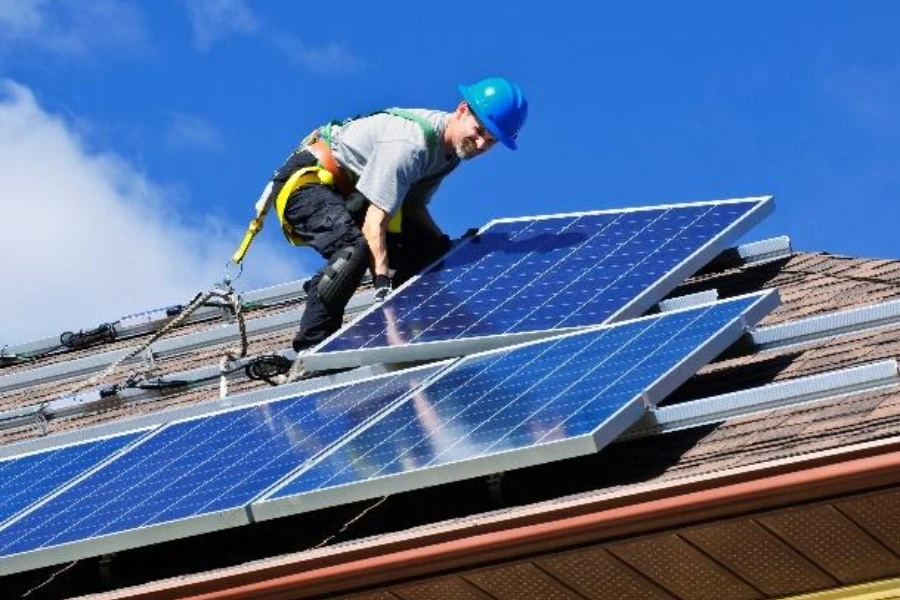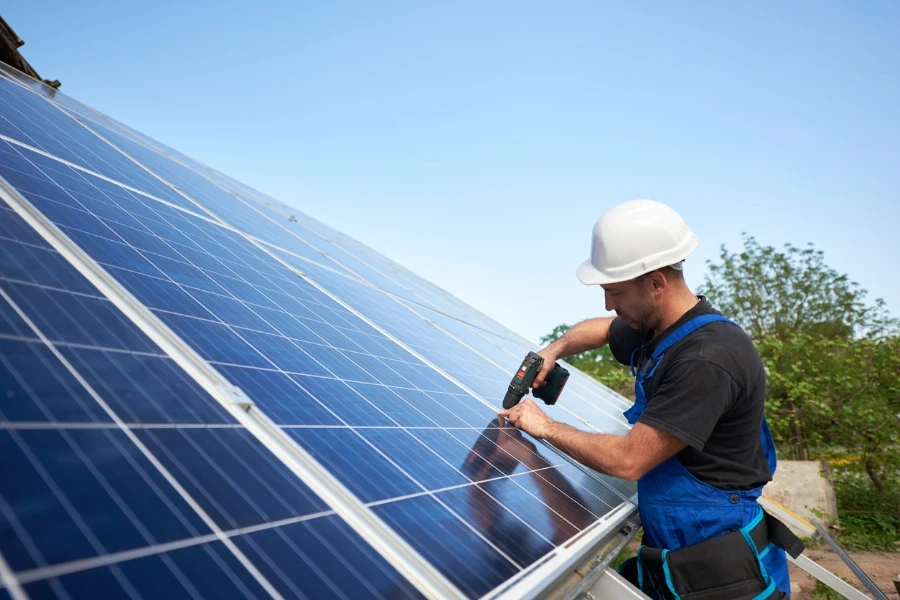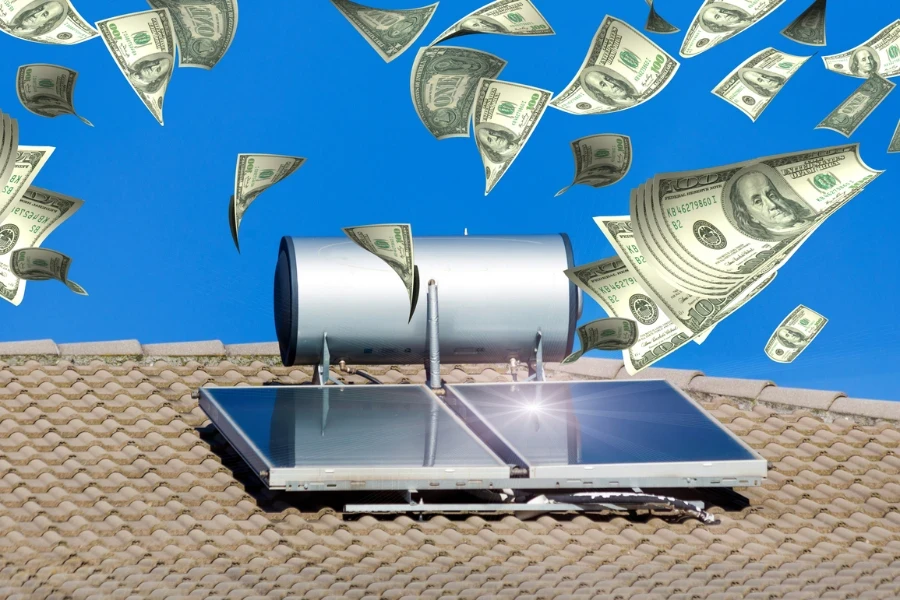Solar-power generators transform sunlight into electricity, offering a sustainable and cost-effective energy solution. Imagine turning your roof into a mini power station. In places like California, families save thousands on electricity bills, and in Australia, some even earn from selling excess power to the grid. Therefore, analyzing the investment and returns of these devices is crucial.
A clear understanding of the upfront costs, ongoing maintenance, and potential financial benefits guides informed decisions, ensuring that solar technology is not only eco-friendly but also economically rewarding.
Table of Contents
Return on investment for solar-powered generators
Financial viability analysis of solar power generators
Final words
Return on investment for solar-powered generators
The return on investment (ROI) of a solar generator is an important metric for measuring the effectiveness of an investment in a solar project. It is commonly used to calculate the ratio between the net benefits derived from a solar system and the initial investment cost over a given period of time.
The initial investment cost is the main barrier to starting a solar project. This includes not only the cost of solar panels and inverters but also the cost of installation and commissioning.
However, these costs are gradually decreasing as technology advances. In addition, government subsidies and tax credits are available in many countries and regions to reduce this initial investment. What should also be considered is the cost of operation and maintenance.
One of the advantages of solar energy systems is their relatively low operating and maintenance costs. Other than regular cleaning and occasional parts replacement, solar generators do not require much maintenance. These low maintenance costs make solar systems more cost-effective for long-term operation.
On the other hand, the financial gains come mainly from savings on electricity bills and the possible sale of electricity. By using solar power sources, a home or company can significantly reduce their electricity bill.
In some areas, excess electricity can even be sold back to the electric grid, creating additional revenue. This electricity bill savings and revenue from the sale of electricity can, over time, significantly increase the return on investment of a solar generator.
Finally, the return on investment for solar generators also includes increased energy independence. For an individual home or business, reducing dependence on the external electric grid through solar power can provide a level of security in the event of fluctuating power prices or unstable supply. This ability to be self-sufficient in energy has great value, especially in areas where off-grid or the grid is unstable.
In short, the return on investment for a solar generator involves the following key aspects:
Initial investment costs: this includes the cost of the solar panels, inverter, installation, battery, and any additional system components and labor costs.
Operation and maintenance costs: While the operation and maintenance costs of a solar generator are relatively low, these long-term costs still need to be considered, such as cleaning the solar panels, replacing the inverter (which typically needs to be replaced every 10–15 years), etc.
Electricity output: This is one of the main factors that determines the return on investment. The power output depends on the efficiency of the solar panels, the location of the installation, the weather conditions, and other factors.
Electricity bill savings: By using solar power, electricity bills can be reduced or avoided altogether. This saving on electricity bills is the main source of return on investment.
Revenue from electricity sales: In some areas, if a solar system produces more electricity than it can use in its own home, it can generate revenue by selling the excess electricity to the grid.
Incentives and subsidies: Many regional governments or energy companies offer subsidies, tax credits, or other incentives to encourage the installation and use of solar generators.
Payback period: This refers to the time it takes to recoup the initial investment. Payback periods for solar systems typically range from a few years to more than a dozen years, depending on each of the above factors.
Financial viability analysis of solar power generators
Initial cost analysis

The initial cost analysis of a solar power system involves several factors, including the cost of the solar panels, installation costs, the cost of the racking and inverter, and possible maintenance costs. The following is a detailed description of these major costs:
Cost of solar panels: this is the main component of the cost of a solar system. The price depends on the type of panel (e.g., monocrystalline, polycrystalline, etc.), brand, quality, and quantity purchased.
Installation cost: This includes the average cost of labor for workers to install the solar panels, solar charge controller, and other equipment. Installation costs may vary depending on the geographic location, size of the system, and complexity of the installation.
Racking and inverter: Racking is used to hold the portable solar panels in place, while the inverter converts the DC power generated by the solar panels into AC power. The cost of these devices depends on their brand and quality.
Additional costs: This may include wires, batteries, electrical protection equipment, monitoring systems, etc.
Potential maintenance costs: While solar power systems usually have low maintenance costs, there may be costs involved in cleaning the solar panels, replacing the inverters, etc.
Financial incentives

Financial incentives for solar power generators are created to promote the use of renewable energy sources, and they vary from state to state and from region to region. Here are some common types of financial incentives:
Government subsidies: Some governments provide direct subsidies to reduce the cost of installing solar power systems. These subsidies may be based on the power installed or cover a percentage of the total cost.
Tax incentives: These include reductions or exemptions from certain taxes associated with the installation and use of solar power systems. For example, there may be VAT deductions, income tax credits, or property tax deductions.
Renewable energy credits: In some countries, such as the United States, individuals or businesses that install solar energy systems may be eligible for renewable energy credits, meaning they can convert the amount of clean energy they save into tax credits.
Feed-in tariffs (FIT): FITs allow owners of solar power systems to sell the electricity they generate to the electric grid at a fixed price above market rates. This encourages the use of solar power.
Net metering: Net metering allows solar system owners to sell unused electricity back to the grid. Meters keep track of this “sold” backup power source, which reduces electricity bills.
Low-interest loans and guarantees: Low-interest loans may be available from government or private financial institutions to support the development of solar projects. In some cases, the government may provide loan guarantees.
Clean energy bonds or funds: These are specialized financial instruments created to support renewable energy projects.
Local government incentives: Local governments may offer additional incentives such as free or discounted solar assessment services, installation grants, or additional tax credits in specific areas.
For specific information, it is recommended to consult your local clean energy management agency or a professional solar installer. These organizations can often provide up-to-date information and guidance to help you fully understand these financial incentives.
Long-term cost savings

Calculating the long-term cost savings associated with solar power generators requires consideration of several factors, and this calculation usually involves projections into the future. The following are the key factors to consider when making this calculation:
Initial installation costs: this includes the cost of purchasing solar panels, batteries, inverters, and other hardware, as well as the cost of labor to install this equipment.
Operation and maintenance costs: Solar power systems are relatively inexpensive to operate, but there are still costs to consider for regular maintenance, cleaning, and possible replacement of components (such as inverters).
Electricity production: Expected electricity production is calculated based on the system’s size (in kilowatts) and efficiency, as well as the geographic location’s sunlight hours and intensity. This is usually calculated as annual power production (kWh).
Lifespan and degradation rate: Solar panels typically have a lifespan of 25 years or more, but their efficiency decreases gradually over time (often referred to as the degradation rate). The average degradation rate is about 0.5% to 1% per year.
Electricity prices and price growth rates: Current electricity prices and projected price growth rates need to be taken into account when calculating average cost savings. Solar power systems can lock in the cost of energy, thus counteracting potential increases in conventional electricity prices.
Net metering and feed-in-tariff policies: If applicable, net metering or FIT policies can provide an additional revenue stream for solar system owners.
Financing costs: If the solar system is purchased through a loan or other financing, interest and other related costs need to be considered.
Incentives and subsidies: Any financial incentives or subsidies offered by the government can directly impact initial costs and long-term returns.
You can use a simple example below to see how the long-term cost savings of a solar generator can be calculated:
| Parameter | Small residential | Commercial project |
| Initial installation cost | $5,500 | $55,000 |
| System size | 5 kW | 50 kW |
| Annual power generation | ~7,000 kWh | ~70,000 kWh |
| Average electricity price | $0.17/kWh | $0.13/kWh |
| Operation and maintenance costs | $50/year | $500/year |
| System lifespan | 25 years | 25 years |
| Annual electricity cost savings | $1,190/year | $9,100/year |
| Total electricity cost savings over 25 years | $29,750 | $22,7500 |
| Total savings | $28,500 | $215,000 |
Evaluation of the break-even point
This refers to the process of calculating at what point the cumulative savings of a solar system will offset its initial installation costs and operation and maintenance costs.
In order to perform this assessment, the key factors mentioned in the previous section need to be considered, including initial installation costs, annual power production, and the value of power. The general assessment process is divided into the following four steps:
Determine the total annual benefit: Calculate the annual electricity savings through the solar system (annual electricity production × local electricity price). If applicable, add revenues under net metering or FIT policies.
Calculate total annual costs: Include O&M costs and any financing costs.
Accumulate costs and revenues: Perform a cumulative calculation of costs and revenues for each year.
Determine the break-even point: The break-even point is reached when the cumulative benefits exceed the cumulative costs for the first time.
Again, a simple example can be used to illustrate the calculation of the break-even point:
| Parameter | Values |
| Initial installation cost | $55,00 |
| Annual electricity cost savings | $1,190/year |
| Annual operation and maintenance costs | $50/year |
| Break-even point (years) | Approx. 5 years |
PS: These examples are for illustrative purposes, and actual results will vary based on specific parameters of the solar power system, regional sunlight conditions, electricity price changes, and other factors. For accurate long-term cost savings calculations, it’s a good idea to consult with professional solar energy advisors or use specialized software for detailed analysis.
Final words

The financial viability of solar generators as a long-term investment for individuals and companies can be gleaned in several ways.
While solar systems require a high initial installation investment, which includes solar panels, inverters, installation costs, etc., these costs can be gradually recovered through long-term electricity savings. Over time, such savings accumulate and eventually not only offset the initial costs but also have the potential to bring additional economic benefits.
In addition, government subsidies and tax incentives further increase the attractiveness of solar projects, resulting in a shorter payback period for the initial investment and increased financial benefits.
The operation and maintenance costs of solar generators are much lower compared to traditional energy generation methods. Solar systems require no fuel supply during operation and have low routine maintenance costs, which means that additional operating costs are manageable and relatively low throughout the life of the system. As solar technology continues to advance and costs are further reduced, investing in solar projects becomes more and more affordable.
It should be noted that the environmental benefits of solar power generators are also an important consideration for their financial viability. As a clean, renewable energy source, solar energy helps reduce carbon emissions and other environmental impactS, thereby combating global climate change.
For companies, it may lead to policy incentives and a boost in public image. Against the backdrop of increasing global emphasis on environmental sustainability, solar power has become an investment option that is in line with future trends.
In summary, investment in solar power generators appears to be financially viable in the long term for individuals or businesses. Its high initial cost can be balanced by long-term electricity bill savings and government incentives, while the low operating costs and environmental benefits add additional value.
Finally, if you want to learn more about buying a solar-powered generator, it’s a good idea to visit Chovm.com.




